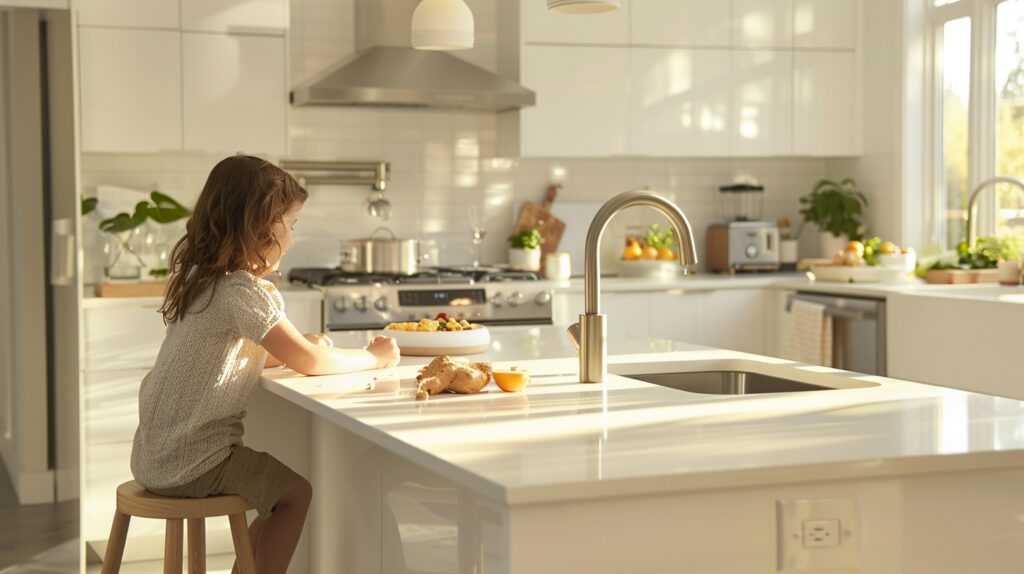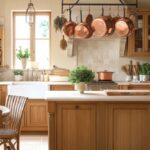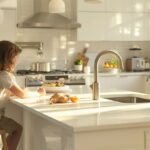Designing a kitchen that caters to both adults and children requires creativity, practicality, and a focus on safety. A Kid-Friendly Kitchen Design should offer a welcoming space where little ones can participate in family activities while staying safe from potential hazards. Whether you’re planning a full kitchen remodel or simply want to make your space more functional for your family, these design ideas will help you create a kitchen that is safe, fun, and convenient for everyone.
1. Choose Durable, Easy-to-Clean Materials
One of the most important aspects of a Kid-Friendly Kitchen Design is selecting durable and easy-to-clean materials. Family kitchens often experience more spills, scratches, and heavy use than other spaces. Opt for materials like quartz countertops, which are both stylish and non-porous, making them resistant to stains. For flooring, consider using vinyl, tile, or laminate, which can handle wear and tear while being easy to maintain. Avoid delicate surfaces like marble, which can be easily stained or damaged by little ones.
Durability not only ensures that your kitchen stays in good shape but also reduces stress, as you won’t need to worry about every spill or scuff.
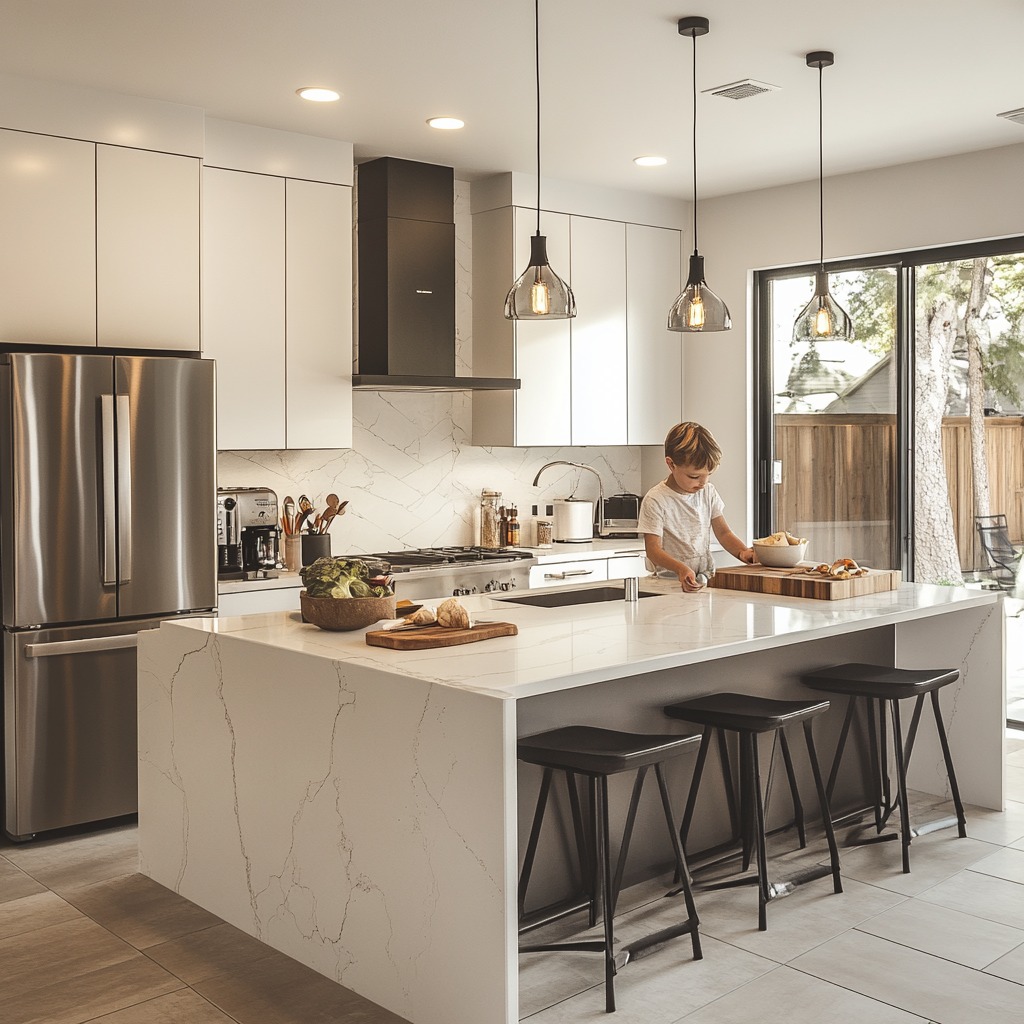
2. Install Childproof Cabinet Locks
Safety is a top priority in any Kid-Friendly Kitchen Design. Installing childproof cabinet locks is a simple yet effective way to keep dangerous items like cleaning supplies, sharp utensils, and fragile objects out of reach. You can choose from magnetic locks, sliding latches, or adhesive locks—whichever works best for your kitchen layout. It’s also a good idea to place hazardous items in high cabinets, leaving kid-friendly items, like plastic cups and snacks, in lower, easy-to-reach spaces.
Childproofing your kitchen cabinets is a straightforward way to keep little ones safe while maintaining an organized, functional space.
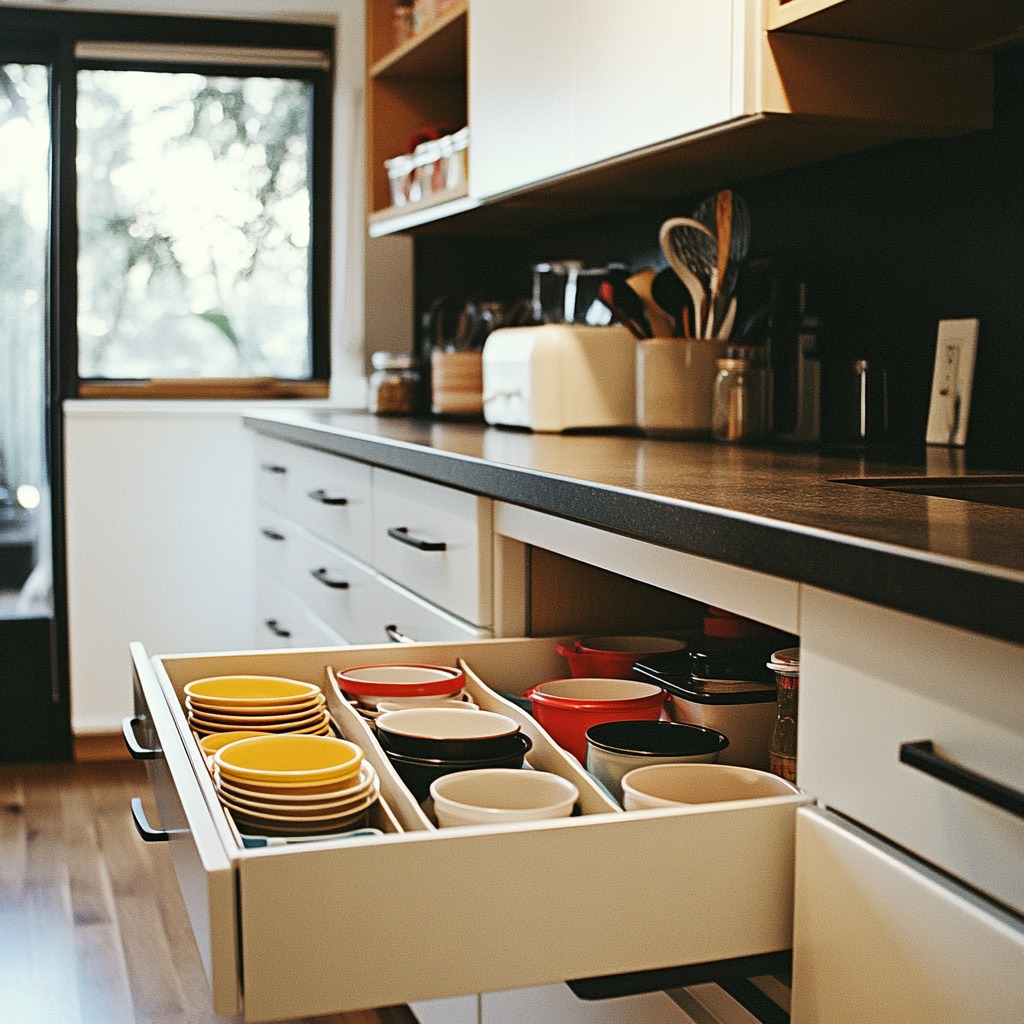
3. Create a Kid-Accessible Area
While it’s important to keep dangerous items out of reach, a Kid-Friendly Kitchen Design should also include spaces that are accessible to children. Creating a kid-friendly drawer or lower cabinet stocked with safe items—like plastic cups, plates, and utensils—encourages independence. This allows children to help themselves during snack time or set the table, fostering responsibility in a controlled and safe environment. You can even dedicate a section of the kitchen for small activities, such as a craft corner or a spot for coloring while you cook.
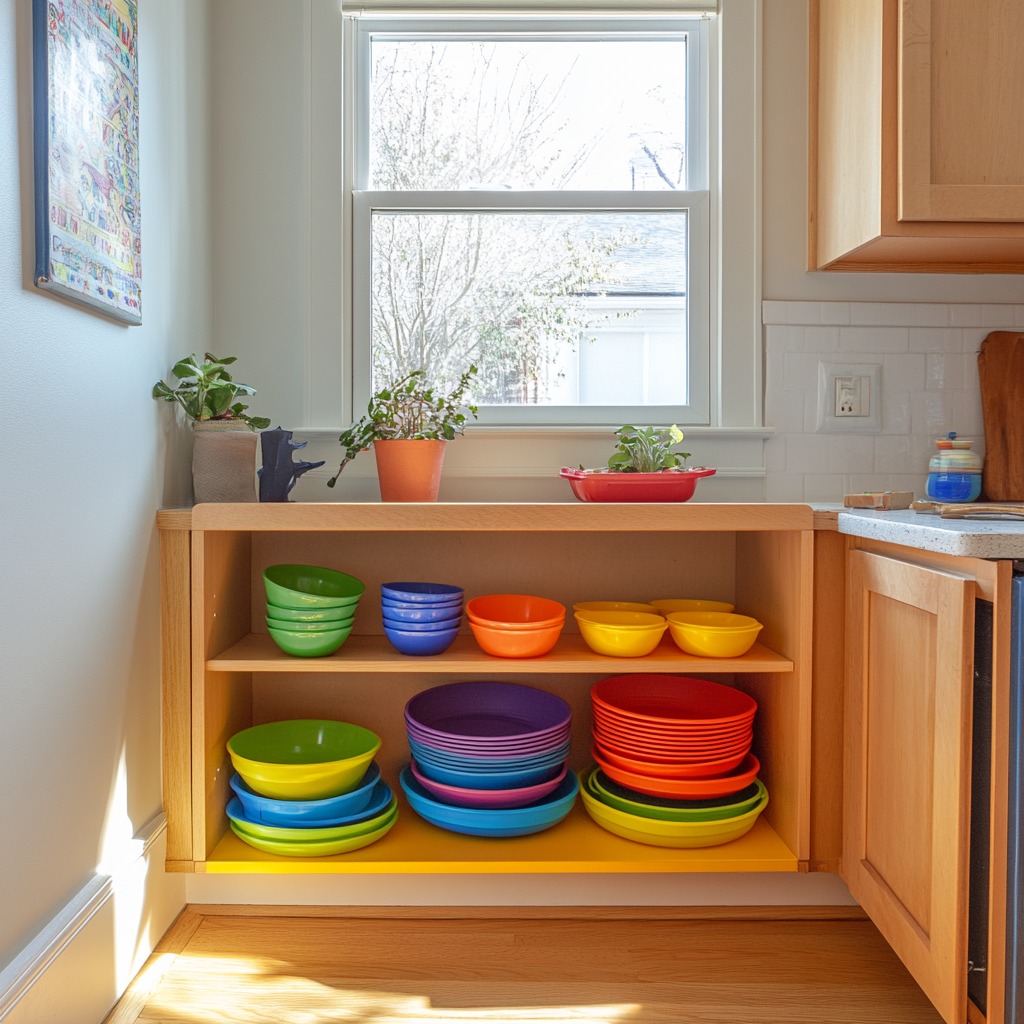
4. Opt for Rounded Corners on Countertops
In a busy family kitchen, sharp edges on countertops can pose a hazard to younger children. To reduce the risk of accidents, consider choosing rounded corners or “bullnose” edges for your countertops. This small change in your Kid-Friendly Kitchen Design can make a big difference in keeping your children safe while preserving the modern and stylish look of your kitchen.
Rounded corners not only help protect kids from injuries but also create a softer, more welcoming atmosphere in the kitchen.
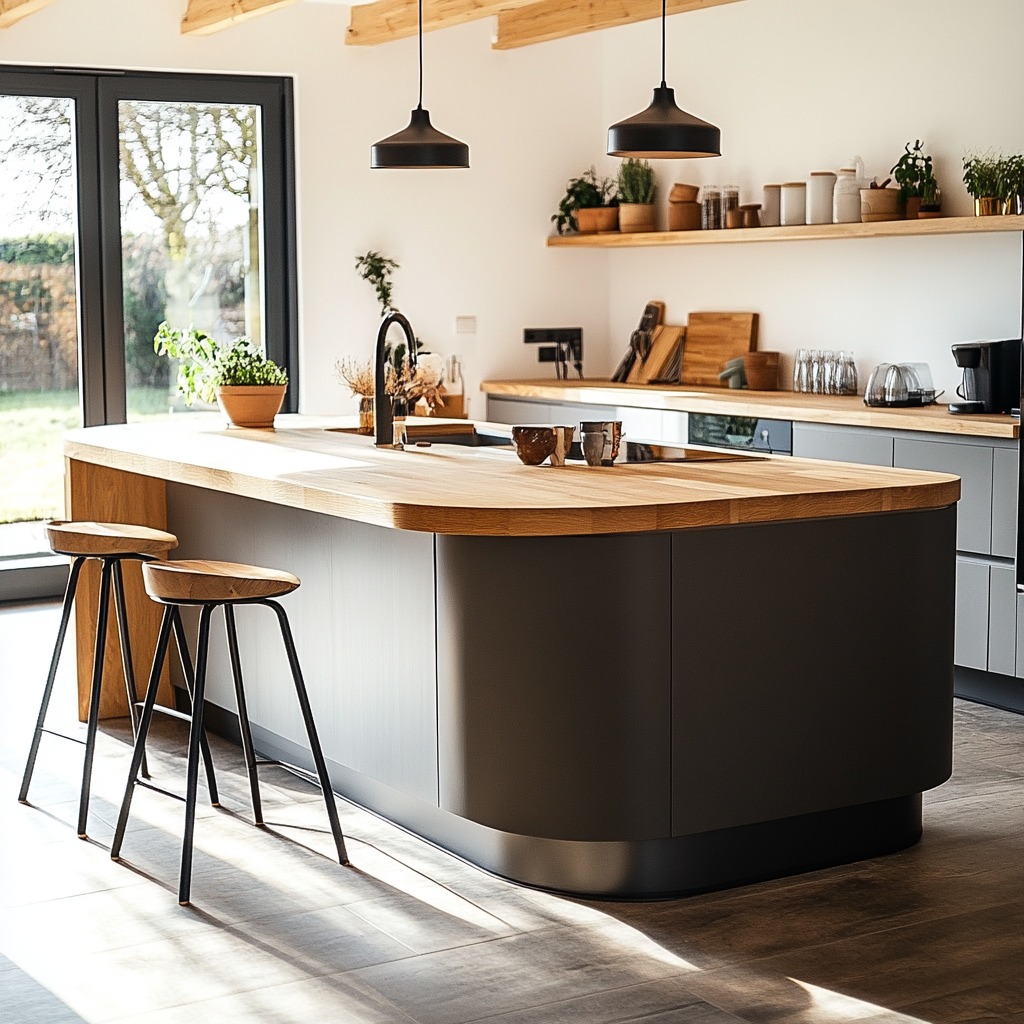
5. Designate a Safe Cooking Zone
Cooking in a busy family kitchen can be hectic, but with a Kid-Friendly Kitchen Design, you can create designated zones that prioritize safety. When setting up your cooking area, choose a cooktop with back-facing controls so that children can’t easily reach the knobs. Consider placing the stove in a low-traffic area to minimize the risk of children accidentally bumping into hot surfaces. You can also add stove guards or heat-resistant mats as extra protective measures.
Creating a safe cooking zone allows parents to cook confidently while keeping their little ones out of harm’s way.
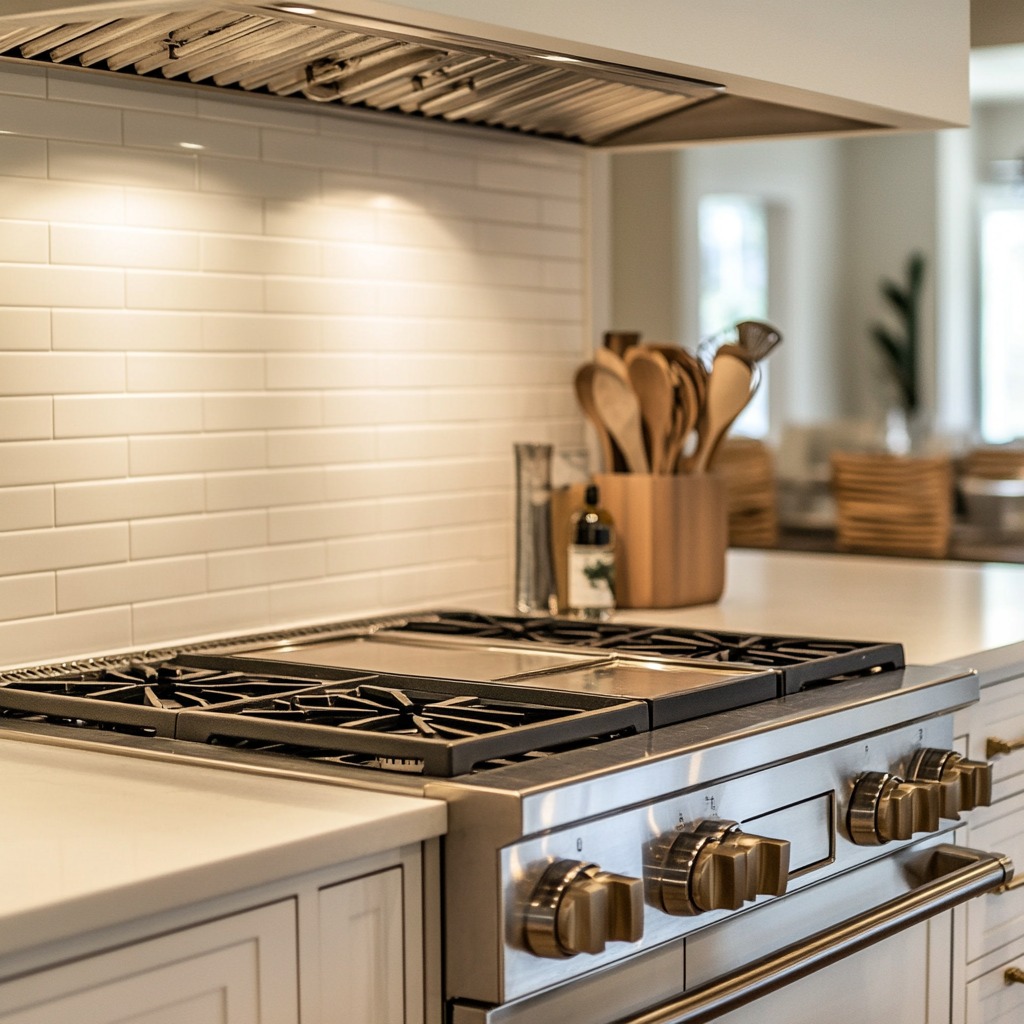
6. Incorporate Kid-Friendly Seating
Comfortable and stable seating is essential in any Kid-Friendly Kitchen Design. Invest in chairs or stools that are the right height for your children and have a solid base to prevent tipping. For younger children, high chairs or booster seats with harnesses offer added safety. Choose seating with easy-to-clean materials, like plastic or faux leather, which can be wiped down after meals or snacks.
Having kid-friendly seating options ensures that your children can comfortably participate in family meals and kitchen activities, making the space truly inclusive.
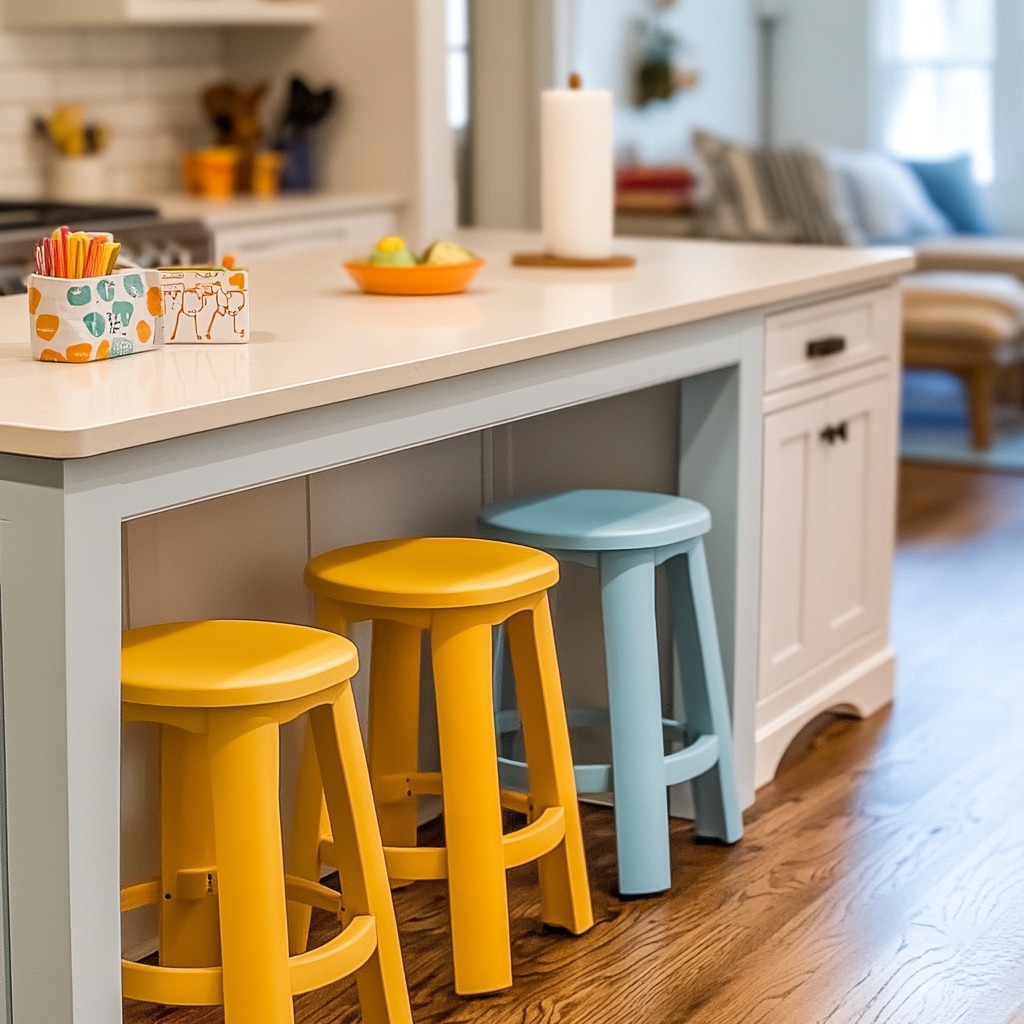
7. Use Soft-Close Drawers and Cabinets
Soft-close drawers and cabinets are a great feature to include in a Kid-Friendly Kitchen Design. Not only do they prevent slamming, but they also reduce the chance of little fingers getting pinched. This feature is becoming a standard in modern kitchens, offering both safety and convenience. Soft-close hardware also adds a sense of luxury to your kitchen, improving the overall atmosphere by reducing noise and creating a smoother, more peaceful environment.

8. Install a Pull-Out Step Stool
Encouraging children to help in the kitchen fosters independence and helps build essential skills. Incorporating a pull-out step stool into your Kid-Friendly Kitchen Design gives younger kids a safe way to reach the counter for cooking or baking. A built-in step stool can be tucked away when not in use, keeping the kitchen clutter-free while still allowing little ones to be part of meal prep.
9. Create a Mini Snack Station
A great way to encourage independence in children is by creating a snack station that they can access themselves. In your Kid-Friendly Kitchen Design, designate a lower cabinet or drawer for storing healthy snacks like granola bars, fruit, or crackers. Organize the area with bins or containers so that kids can easily find what they’re looking for. This setup promotes healthy habits and helps keep the kitchen organized.
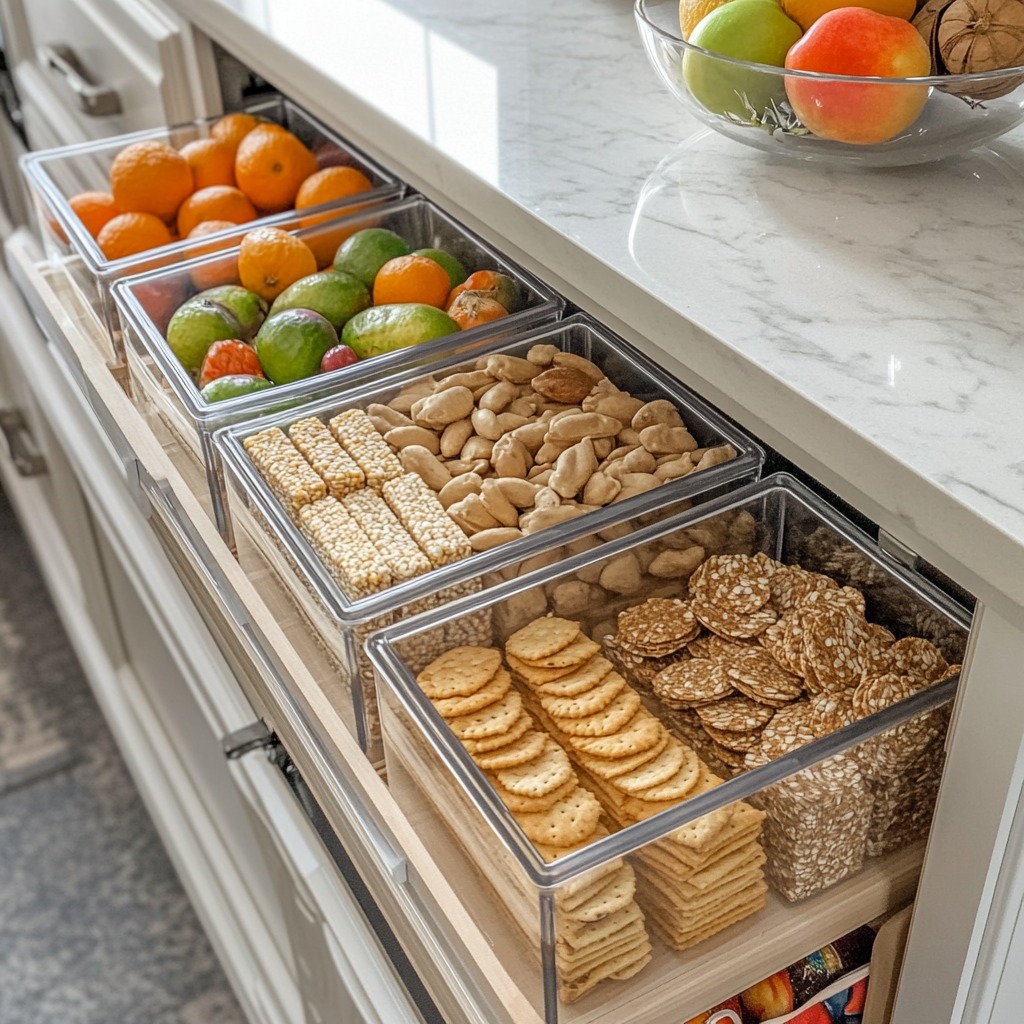
10. Add a Chalkboard or Whiteboard Wall
One of the most fun features in a Kid-Friendly Kitchen Design is a chalkboard or whiteboard wall. This space allows kids to draw, practice writing, or stay entertained while you prepare meals. It’s also a useful spot for family grocery lists, notes, or weekly meal planning. This interactive element makes the kitchen feel like a family-friendly space while adding a creative, personalized touch.
11. Install Non-Slip Flooring
Safety should always come first, and non-slip flooring is an important feature in any Kid-Friendly Kitchen Design. Consider materials like non-slip tile, vinyl, or cork, which provide better traction and reduce the risk of accidents when the floor gets wet. Adding non-slip mats in high-traffic areas like near the sink or stove can also add an extra layer of safety.
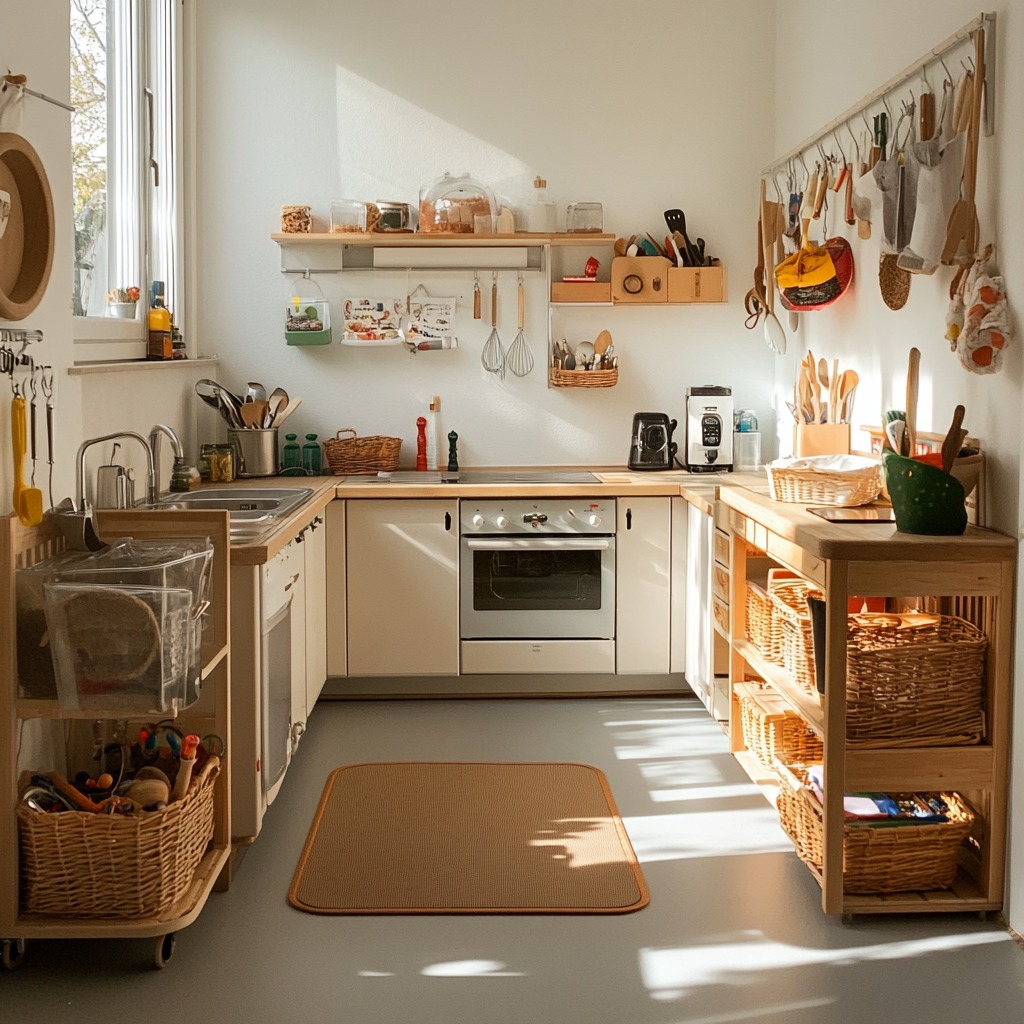
Conclusion
Designing a kitchen that is both stylish and functional while prioritizing safety for children requires thoughtful planning. By incorporating elements like childproof locks, kid-accessible areas, and non-slip flooring, you can create a Kid-Friendly Kitchen Design that works for the entire family. From soft-close cabinets to creative spaces like a chalkboard wall, these ideas will help you make your kitchen a fun, safe, and welcoming environment for kids while maintaining the functionality and style you need.

